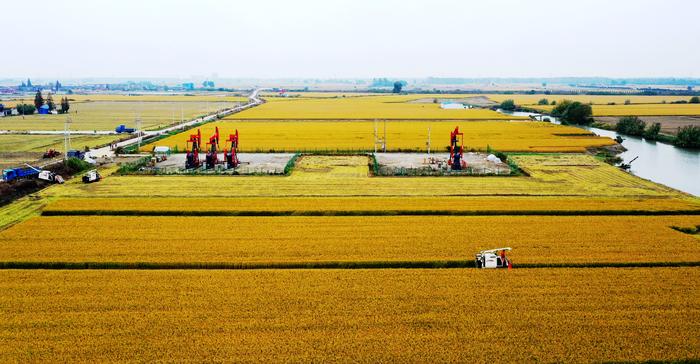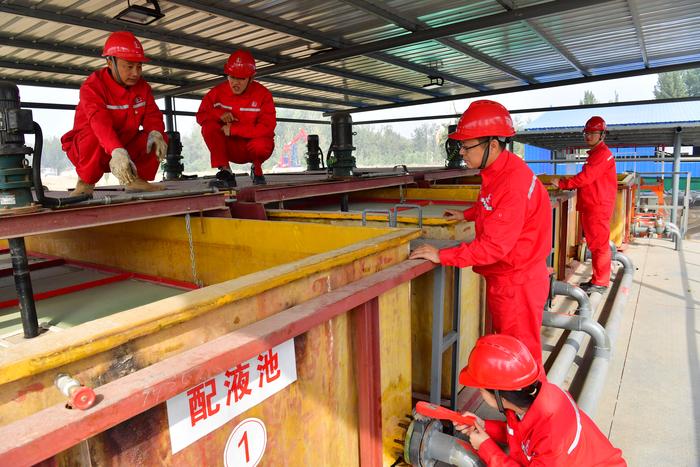|
| 2020-10-30 来源: 中国石化新闻网 |
| 石化新闻 |
中国石化新闻网讯 据彭博社10月27日报道,减少化石燃料的使用不足以减缓气候变化。全球减排任务的进程已经延误了很久,需要采取措施从空气中分离(去除)二氧化碳。 根据一项新的研究显示,如果有适当的监管和激励措施,从事从空气中去除二氧化碳的行业很快就会带来与今天的石油和天然气行业一样多的收入。在短期内,这意味着更多的资金将流向减少碳排放的环境自净方式,例如植树和保护泥炭沼泽和红树林等地区。最终,一些直接从空气中捕捉二氧化碳或者增强岩石风化等技术将兴起热潮,不过这些技术还没有成熟,也没有足够的资金来大规模应用。 这项由Vivid Economics发表的研究发现,到2050年,每年来自负排放或碳抵消的收入可能达到1.4万亿美元,高于目前的约3亿美元。相比之下,根据Rystad能源咨询公司的预测,石油和天然气行业今年预计将带来1.5万亿美元的收入,较2019年减少约40%。 Vivid Economics的执行董事Jason Eis表示,政府为碳去除项目支付的费用与他们多年来为其他环境保护支付的费用并没有太大的差别。人们为自身的生活环境付费,通过向公用事业公司支付费用,将干净的水输送到家中,而家庭产出的废水又由税收来支付处理费用。因此,购买行为也有助于从大气层中去除有害的温室气体。 Vivid Economics估计的收入预期远高于其他专家。哥伦比亚大学(Columbia University)高级研究学者胡利奥·弗里德曼(Julio Friedmann)认为,到2050年,碳去除行业的收入可能接近5000亿美元。致力于碳减排的非营利组织“Carbon 180”的执行董事诺亚?戴奇(Noah Deich)称,预测一个市场30年后的价值是一种“高度投机的行为”,尤其是当下,这个市场还未孕育出来。 今天的碳抵消市场很大一部分依赖于经济实体自愿购买信用额度来实现自己设定的目标。尽管这种自愿购买的市场有望增长,但在政府监管机构的监管下,成熟的高市场化的碳去除市场将快速扩张。 然而,无论是依赖自愿购买的市场还是成熟的正式市场都需要可信赖的供应商。而政府法规可以帮助建立标准,监测和验证自然解决方案和技术选择是否能像承诺的那样储存二氧化碳。这也将帮助客户比较不同的碳去除产品,从雨林保护到海洋海藻农场等等,以找到真正符合需求的产品。 尽管许多专家对最终的税收含糊其词,但他们一致认为需要一个强有力的碳抵消市场,尤其是在世界上大多数最大的经济体都在致力于实现净零排放的情况下。渣打银行(Standard Chartered Plc)首席执行长温特斯(Bill Winters)去年9月警告称,如果没有正确的保障措施,碳抵消行业可能容易受到类似利率操纵的影响。英国央行(Bank of England)前行长马克?卡尼(Mark Carney)本月早些时候表示,尽管碳抵消市场会很复杂,但这也将是实现气候目标的重要组成部分。并预计,如果世界各国认真对待气候行动,该收入将至少达到数百亿美元。 即使化石燃料销售收入下降,大型石油公司也不需要做旁观者。从空气中提取二氧化碳的一些技术选择需要用到传统能源公司拥有的精确的专业知识和基础设施。这些公司需要将碳抽回到地下深处——这通常也是发现石油和天然气的地点,而不是将碳从地下抽出。 牛津大学(University of Oxford)研究员塞西尔吉拉丁(Cecile Girardin)表示:“这是一个巨大的机会,可以引导投资流向正确的项目。” 王佳晶 摘译自 彭博社 原文如下: With Big Oil Declining, Carbon Removal Could Take Its Place Transitioning away from fossil fuels won’t be enough to slow climate change. The world has delayed the task of cutting emissions for so long that we likely will have to also deploy solutions to draw down carbon dioxide from the air. With the right regulations and incentives in place, the carbon removal industry could soon be bringing in as much revenue as today’s oil and gas sector, according to a new study. In the near term that means more money going toward natural ways of drawing down carbon, e.g. tree-planting and preservation of areas such as peat bogs and mangrove forests. Eventually we’ll see the rise of technologies such as direct air capture or enhanced rock weathering, which aren’t yet ready or cheap enough to be deployed at scale. The study, published by Vivid Economics, finds that revenue from negative emissions or carbon offsets could reach $1.4 trillion annually by 2050, up from about $300 million today. For comparison, according to consultancy Rystad Energy, the oil and gas industry is projected to bring in $1.5 trillion this year—about 40% less than it did in 2019. Governments paying for carbon removal isn’t so different from any of the other environmental protections they’ve paid for over the years, said Jason Eis, executive director of Vivid Economics. “The public buys all sorts of environmental outcomes,” he said. “We buy clean water” by paying utilities to pipe it into our homes and through taxes to treat the waste water we return. So, he thinks, we’ll also buy the removal of harmful greenhouse gases from the atmosphere. Vivid Economics’ revenue estimates are much higher than those of other experts. Julio Friedmann, a senior research scholar at Columbia University, thinks the carbon removal industry’s revenues in 2050 are likely to be closer to $500 billion. Noah Deich, executive director of Carbon 180, a non-profit that works on carbon removal, called predicting the value of a market 30 years from now a “highly speculative exercise,” especially when that market barely exists today. A good fraction of today’s carbon offsets market relies on entities voluntarily buying credits to meet self-set goals. Even though the voluntary market is expected to grow, formal markets overseen by government regulators are able to scale much more quickly. Both voluntary and compliance markets, however, need vendors that can be trusted. Government regulations can help create standards for monitoring and verifying that both natural solutions and technological options can store away carbon dioxide as promised. These will also help customers compare across different carbon removal products, from rainforest protections to ocean kelp farms, to find the one that will actually suit their needs. Though they quibble about its eventual revenues, many experts agree on the need for a robust carbon offset market—particularly in a world where most of the largest economies are committed to reaching net-zero emissions. Bill Winters, chief executive officer of international bank Standard Chartered Plc, warned in September that, without the right safeguards, the offsets industry could become vulnerable to interest rate-style manipulation. Mark Carney, former governor of the Bank of England, said earlier this month while offset markets will be complex, they will also be a major component of meeting climate goals. He expects revenues to reach at least tens of billions of dollars if the world takes climate action seriously. Even as revenues from the sale of fossil fuels decline, Big Oil needn’t be a bystander. Some of the technological options to draw down carbon dioxide from the air require the exact expertise and infrastructure possessed by legacy energy companies. Instead of drawing carbon out of the Earth, however, they will need to pump it back in, deep underground, often in the same places where oil and gas were found. “There’s a huge opportunity to direct the flow of investment to the right projects,” said Cécile Girardin, a researcher at the University of Oxford. |








